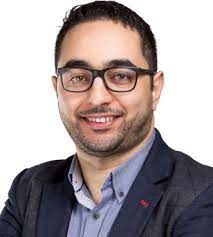FlexNGIA — The New Frontiers for Future Tactile Internet
29 September 2021, 15.00-16.30 MSK
Keynote Abstract
From virtual reality and teleportation, to telepresence, augmented reality, holograms, and remotely‑controlled robotics, these future network applications promise an unprecedented development for society, economics and culture. Unfortunately, today’s Internet falls short when it comes to providing the stringent performance requirements imposed by such applications. This is due to several fundamental limitations in the design of the current network architecture and communication protocols. As a result, there is a pressing need to rethink the network architecture and protocols, and efficiently harness recent technologies in terms control and data plane, in-network computing, cloud computing, virtualization and softwarization to devise the next-generation tactile Internet.
In this talk, we start by analyzing the characteristics and requirements of future networking applications and highlight today’s Internet limitations. We then draw a rough sketch of FlexNGIA (www.FlexNGIA.net), a Flexible Next-Generation Internet Architecture that leverages in-network computing, network softwarization and virtualization to satisfy the requirements of future Internet applications and services. We also discuss through some use-cases how FlexNGIA could ensure the service level guarantees required by some of the future network applications.
DEP talk Abstract
In this presentation, I will briefly present the advantages of melding networking and computing capabilities in the core of future networks. I then show how such a combination could be a fundamental cornerstone to build and offer novel network functions and services that could potentially break the tenets of today’s Internet and achieve the stringent performance and availability requirements needed by future Internet applications.
Speaker
Mohamed Faten Zhani, associate professor with the department of software and IT engineering at l’École de Technologie Supérieure (ÉTS Montreal) in Canada.

Mohamed Faten Zhani is an associate professor with the department of software and IT engineering at l’École de Technologie Supérieure (ÉTS Montreal) in Canada. His research interests include future Internet architectures, cloud computing, network function virtualization, software-defined networking and resource management in large-scale distributed systems. Faten has co‑authored several book chapters and research papers published in renowned conferences and journals including IEEE/IFIP/ACM CNSM, IEEE/IFIP IM/NOMS, IEEE INFOCOM, IEEE transactions on cloud computing and IEEE Journal on Selected Areas in Communications (JSAC). He delivered more than ten keynote speeches in renowned conferences and workshops in the last couple of years. He also served as the general or technical program chair of several international workshops and conferences. He is also co-editor of the IEEE Communications Magazine series on network softwarization and management, associate editor of the IEEE Transactions of Network and Service Management, Wiley international journal of network management, and managing editor of the IEEE softwarization newsletter. He is co‑founder and vice-chair of the IEEE Network Intelligence Emerging Technology Initiative and a cluster lead at the IEEE P1916.1 SDN/NFV Performance standard group. Faten recently received the IEEE/IFIP IM 2017 Young Researchers and Professionals Award as a recognition for outstanding research contribution and leadership in the field of network and service management.